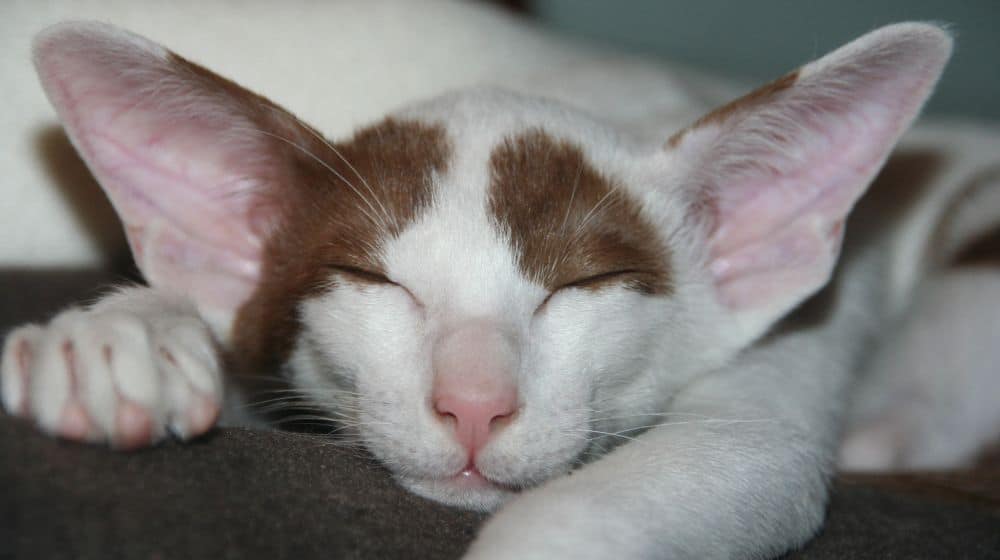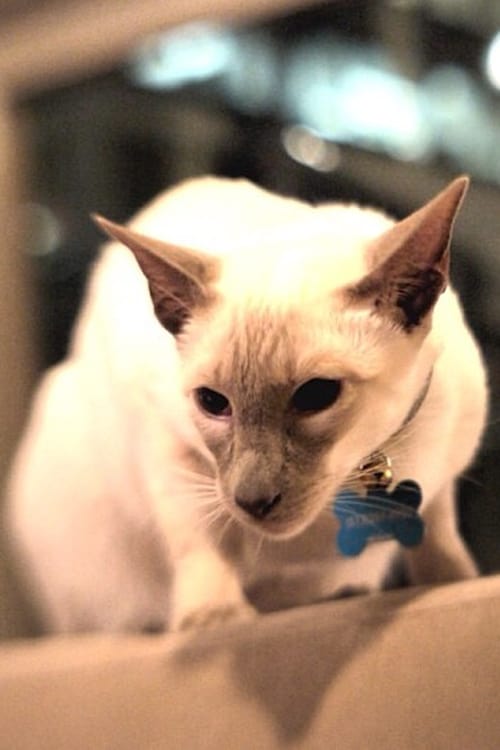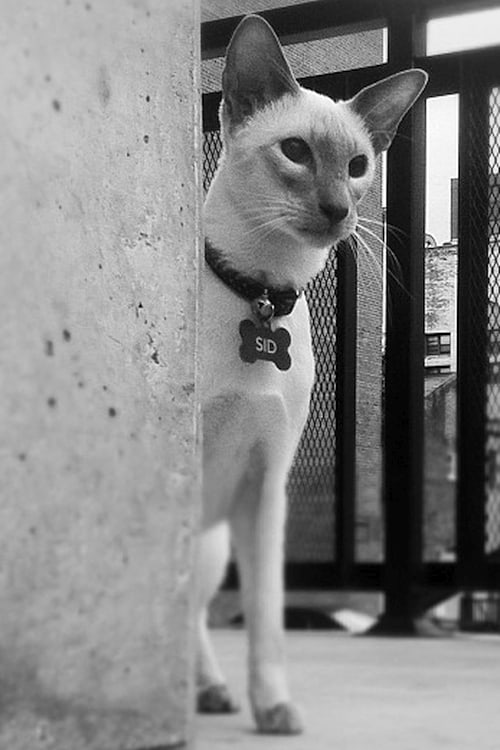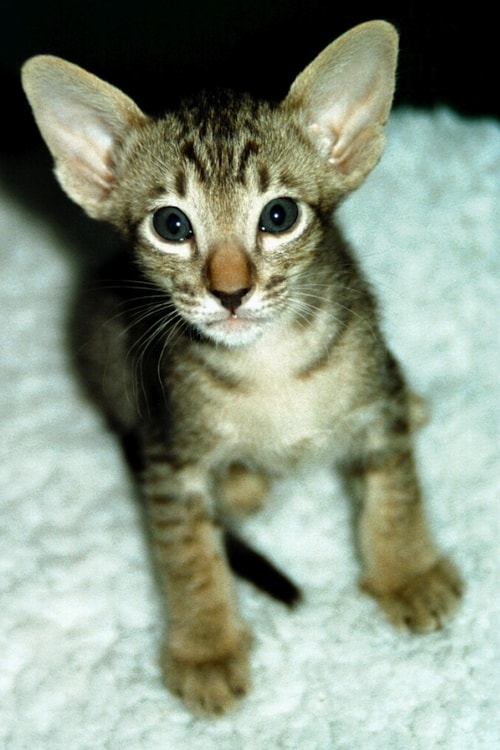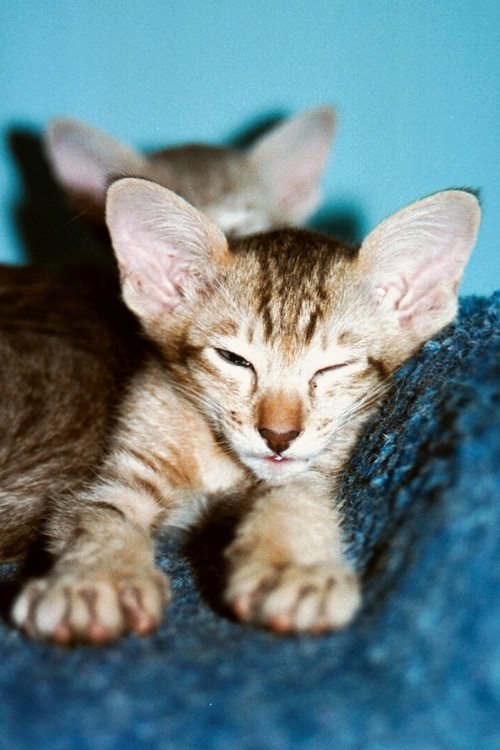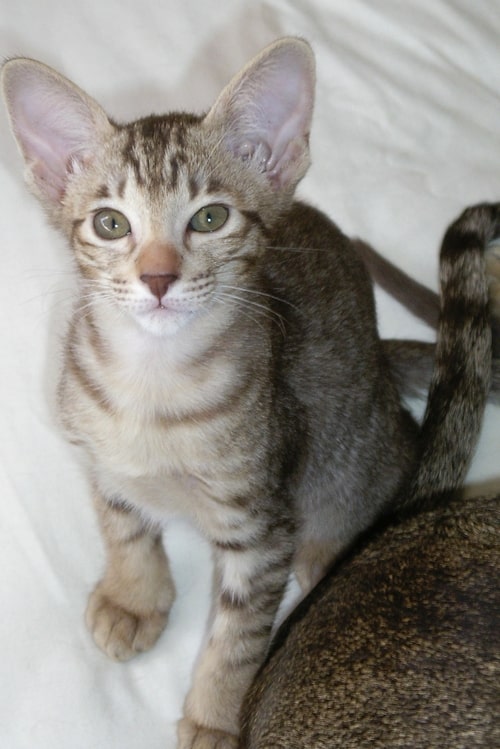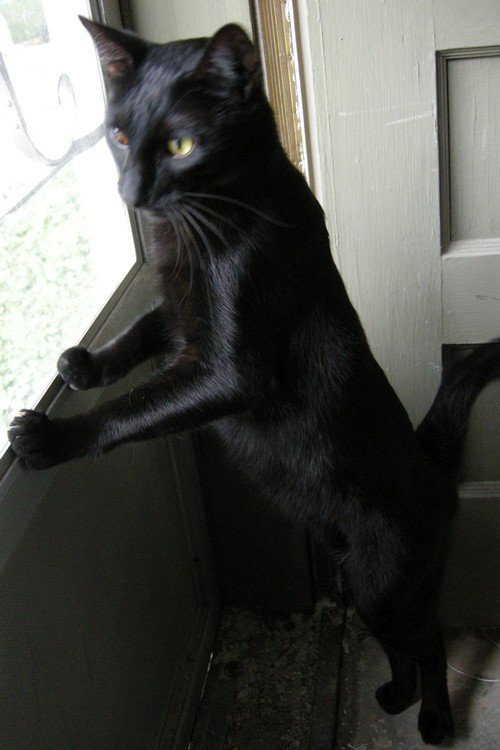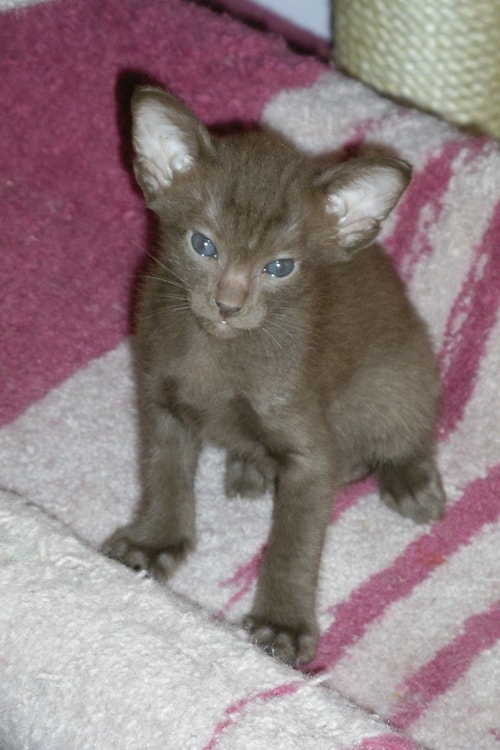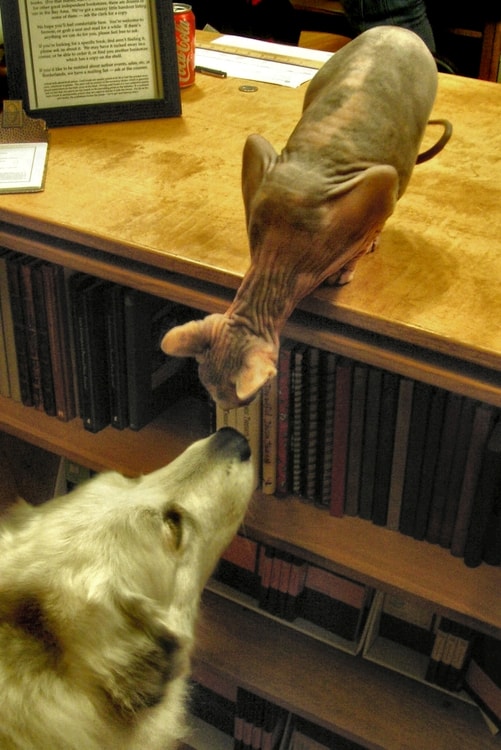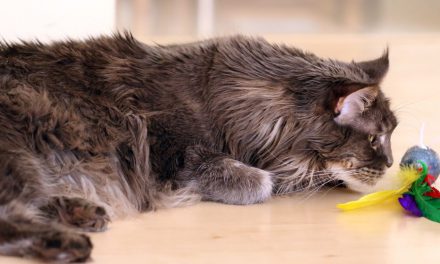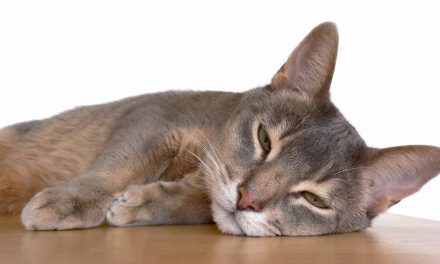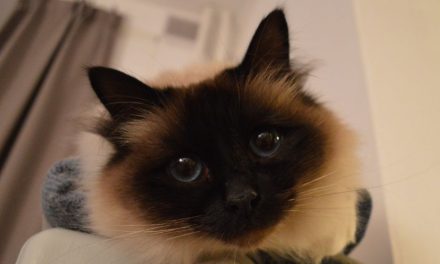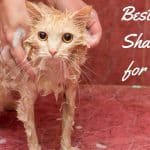The oriental cat breed is regarded as a cousin of the Siamese and are similar in nature and traits as well. The one big difference between them is that they are less chatty than their Siamese counterpart. Orientals possess a long, slender body, triangular shaped face, long straight nose, tall, wide ears and mesmerizing almond shaped eyes. Even though Orientals have almost the same body type of the Siamese, unlike the Siamese, they actually have over 300 color and pattern combinations. This breed was created by crossing Siamese cats with Russian Blues, Domestic Shorthairs and Abyssinians.
They come in long hair and short hairs varieties with the short hair being the most popular due to its glossy, short coat that is not prone to shedding as much the long hair type. However, long hairs have more of a medium length coat instead of plush thick coat that a Persian would have. The cross breeding to develop the Oriental, has resulted in a healthy breed that is significantly less likely to have physical disorders and genetic illnesses. The unique characteristic about the Oriental is that they are highly intelligent and trainable. They can be taught to walk on a leash, as well as other fun activities. They love to play and enjoy jumping and climbing in a vertical environment. It is highly recommended that their homes have cat trees and cat condos to satisfy this instinctual need of theirs. Orientals are very out-going, fun-loving, and enjoy attention. They enjoy conversation, being brushed (which can be associated with petting) and being played with. Their typical response to these displays of affection, would be a mellow purr, loud chirping or even lying with the belly up in the air, waiting to be rubbed by you.
Even though they are generally active, they do enjoy quiet moments of just lounging on by your side or sitting in your lap. Orientals need constant companionship and interaction and don’t do well being left alone for long hours. It’s best to get them an energetic housemate since Orientals have a fondness for playing. Orientals make a good house cat for families with older kids, households with other pets and experienced cat owners. On the nutritional front, Orientals should have measured feedings due to the fact that their slender body and legs does not hold up extra weight very easily which could potentially cause unnecessary health problems for them. The history of the Oriental is that they were bred into existence in the late 1950’s and 1960’s in England. Breeders were intrigued by the look of the Siamese built but wanted more variety in color, hence the Siamese was bred with the Russian blue to produce the alluring Oriental. As time progressed, American breeders who were fascinated with the Oriental, developed a desire for more diverse coloring and slightly different features of the Oriental. They then decided to cross the Siamese with Domestics and Abyssinian. Once again, the oriental cat breed are personable, lively cats and will offer an abundance of affection to any loyal pet parent.
Oriental Cat Breed References
- Photo by Lil Shepherd via CC BY
- Photo by 5chw4r7z via CC BY
- Photo by Lil Shepherd via CC BY
- Photo by hobvias sudoneighm via CC BY
- Photo by Lil Shepherd via CC BY
- Photo by Lori Leaumont via CC BY
- Photo by Lil Shepherd via CC BY
- Photo by Lil Shepherd via CC BY
- Photo by Lil Shepherd via CC BY
- Photo by 5chw4r7z via CC BY
- Photo by 5chw4r7z via CC BY
- Photo by 5chw4r7z via CC BY

